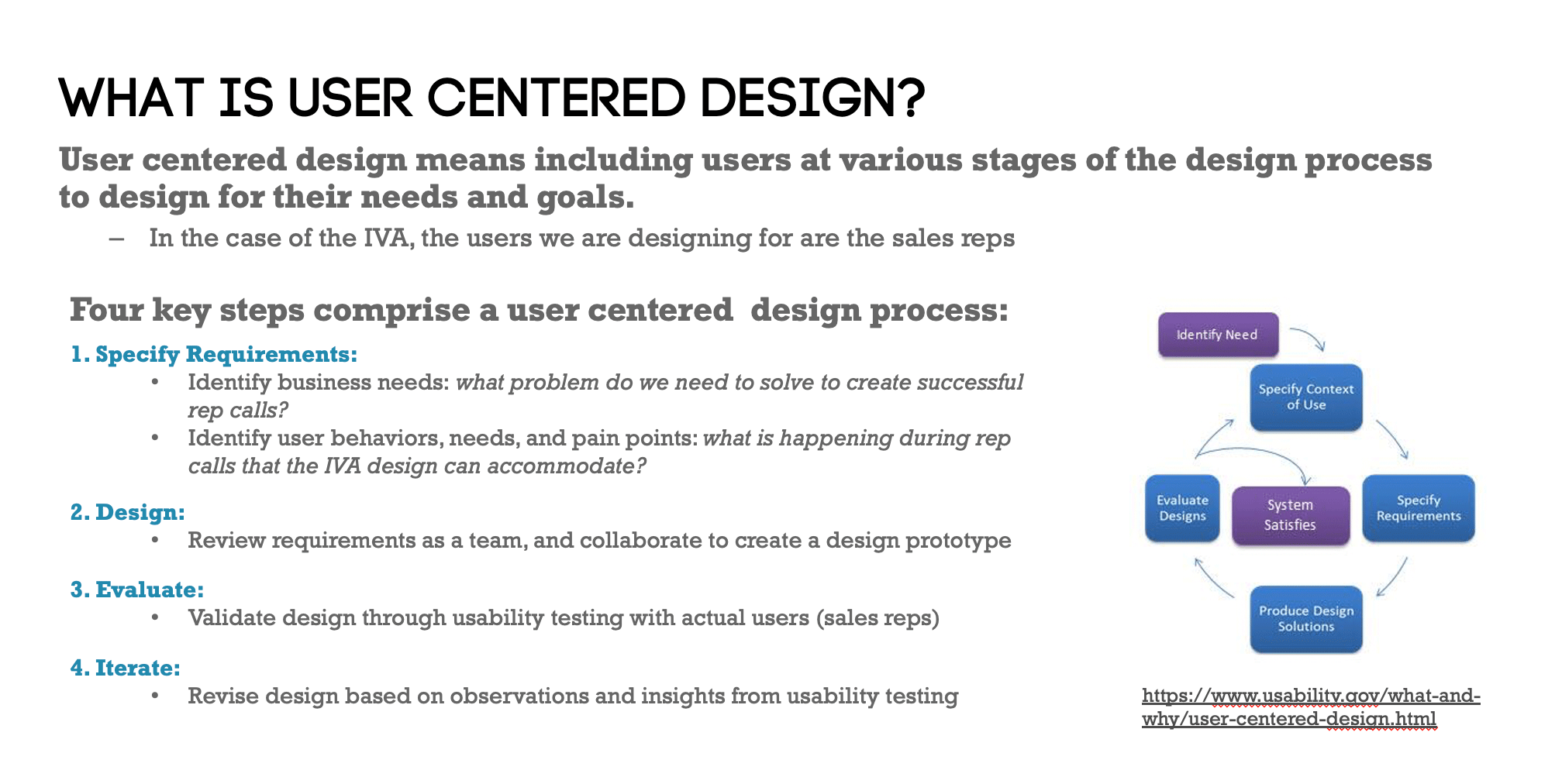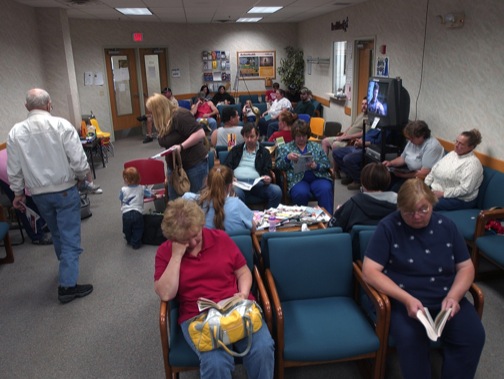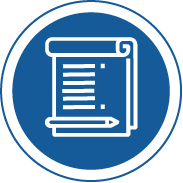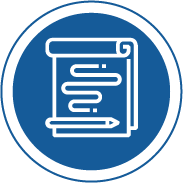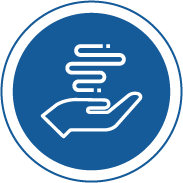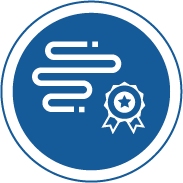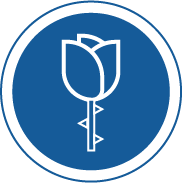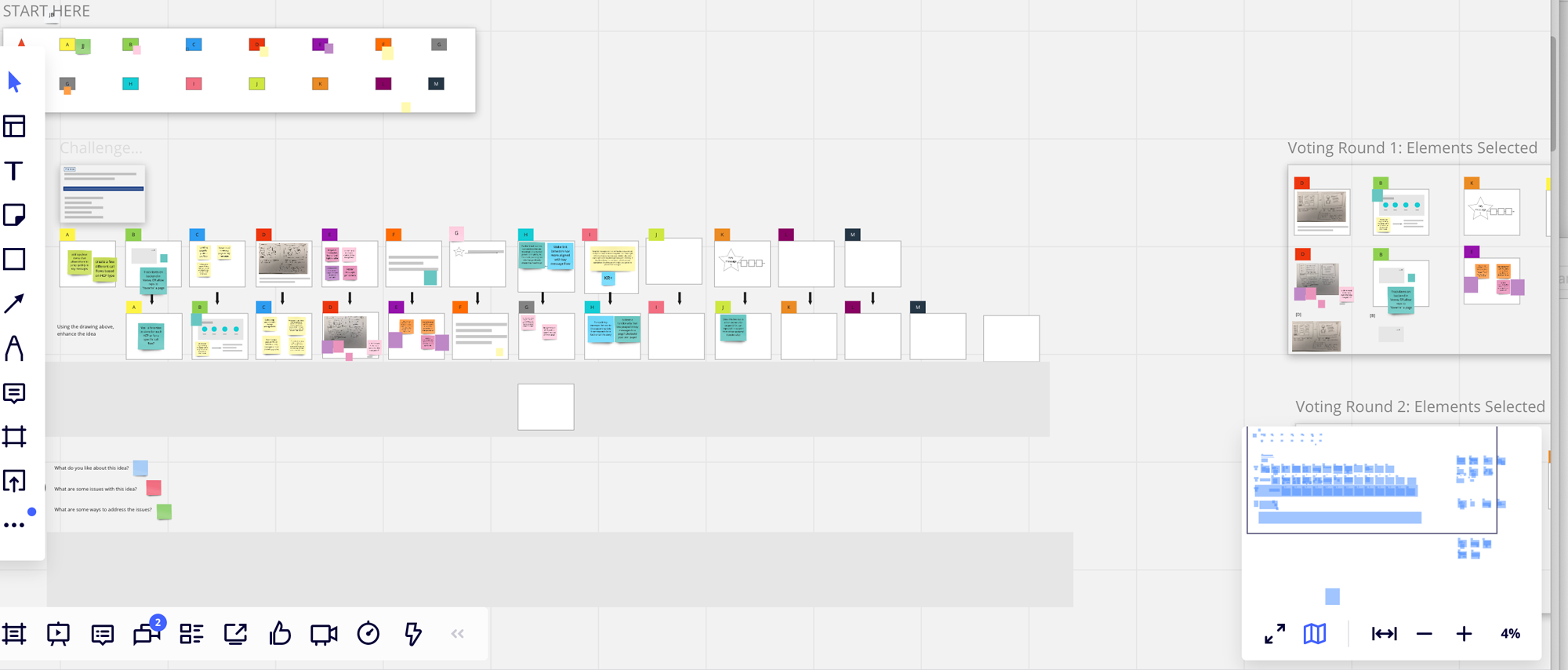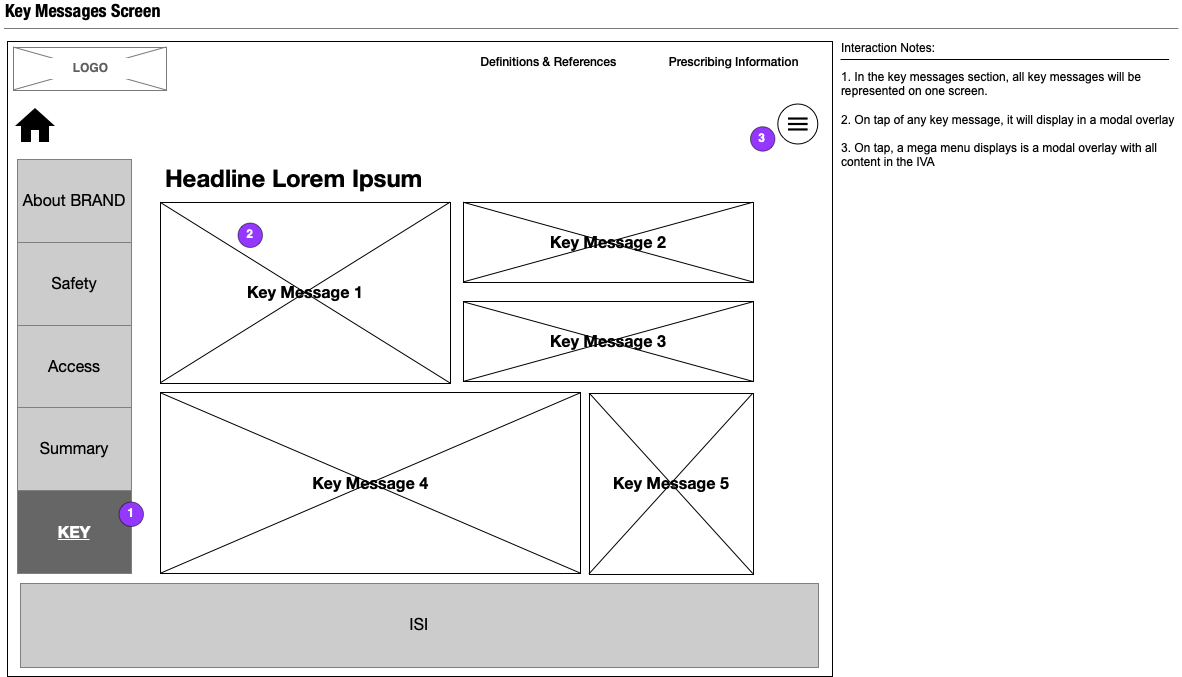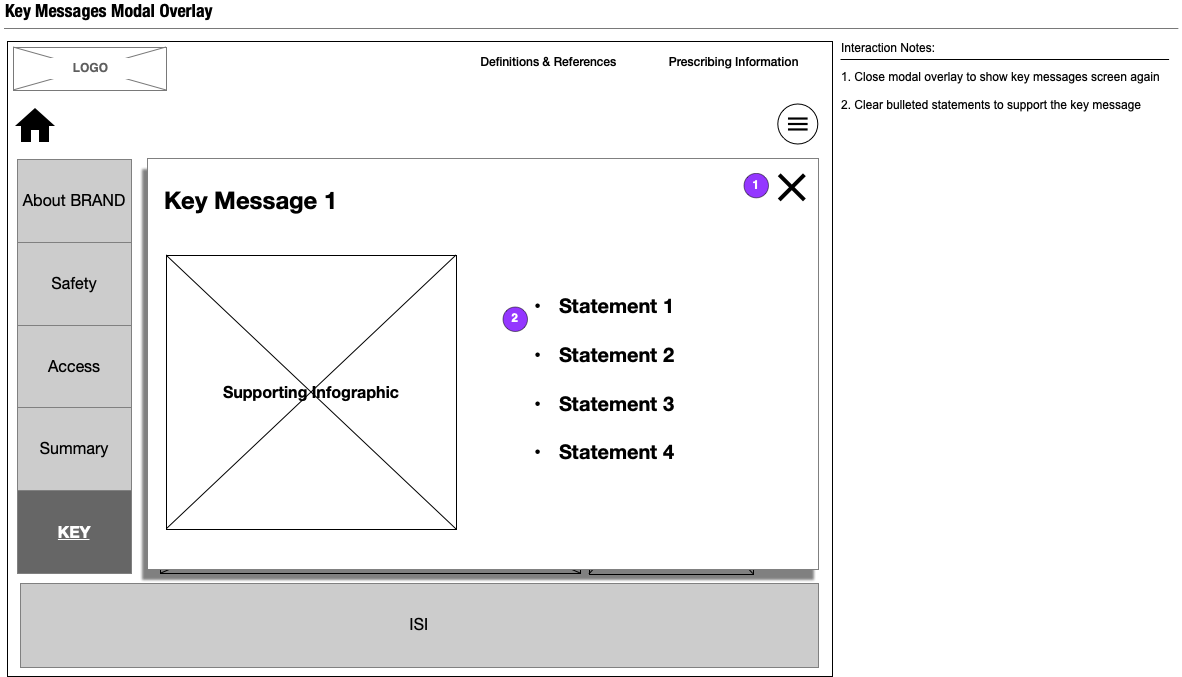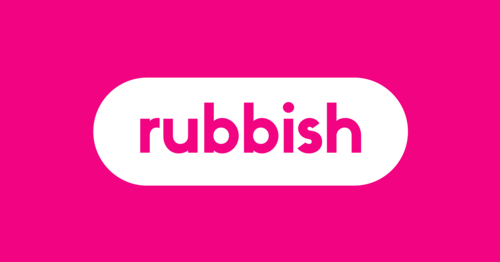View the full Discussion Guide
Our discussion guide was structured into two main sections:
- Questions about the in-office experience of the visit, and then questions about their decision to use or not use the IVA without getting into specifics of their IVA use.
- Questions specifically about how they used the IVA.
Starting the Visit:
- Walk me through how the conversation started
- What materials did you start with?
- Tell me about why you didn't use the IVA (if they didn't use it)
- Take me through how you decided what to talk about
Specifically about the IVA:
- How often would you say you utilize the IVA?
- Tell me how you feel about using the IVA
- The last time you used it, were there any challenges in using it?
- (If yes) In the IVA, show me where this is a challenge
We talked to 6 different reps. I wanted to talk to a mix of higher performing reps and reps that were struggling so we could get a range of experiences and thought processes, but the client wanted to focus on the best performers thinking that would yield the most useful findings.
Last minute interventions prevented me from fully moderating the interview. The client decided they should moderate, and that I could take notes and chime in with any questions I wanted to ask. Not having the liberty to intuitively ask questions and probe where I wanted, I had to pivot in my approach.
Our client insisted on moderating the interviews, so I thought about the next best move in our situation to extract as much quality data as I could in my position. I altered my mindset from "This is wrong!" to "This will be interesting!"
When called upon, I started by re-introducing myself, thanking the participant for their time and making sure I expressed how great their feedback was. I validated everything they had been saying to make them feel comfortable, assured and that they were the expert.
I liked to include, "This is all really interesting to myself and the larger design team, so thanks for being so open talking about these things."
I got very used to saying, "I want to take a step back to where you said…" and, "Let's rewind a bit: did I hear you correctly when you said…"
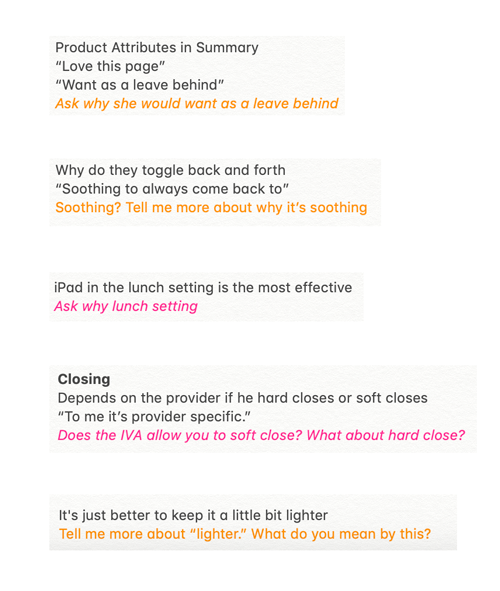
Sometimes I used the Notes app, other times I used Excel. I transcribed things and highlighted them so I knew to circle back with a question.

